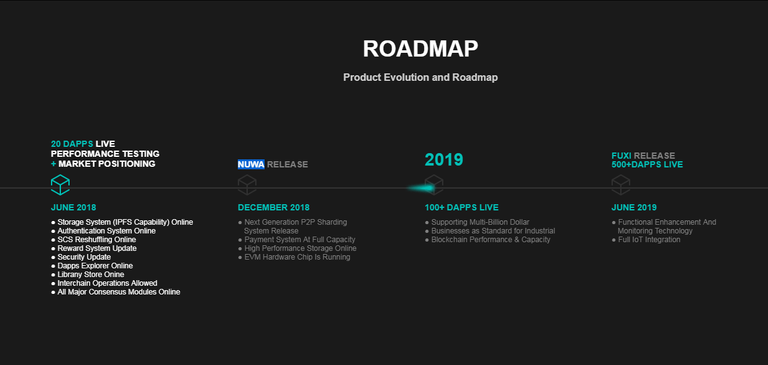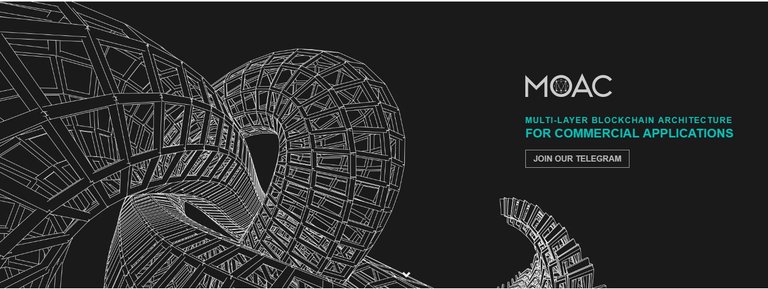There are many blockchain available in the market, but very few are popular. Bitcoin and Ethereum and the most popular one and now there are few more such as EOS, Neo, IOTA, NEM, etc. But most of the platforms are struggling with some issues, or not able to support the todays need. Some of the main problems are low transaction per second, fixed consensus models, and are not able to quickly adapt to the ever-growing needs of developers, high usage fees, etc. These platforms are working on to solving the problems but upgrading or modifying the existing blockchain is not that easy. There are some new blockchain projects which trying to implement new solutions to solve these issues, but I particularly liked one project and that is MOAC.
What the difference between MOAC and other blockchain platforms?
Existing blockchain performs all operation in single layer system. But MOAC is layered multi-blockchain platform, consisting of a global primary blockchain they call is as MotherChain and additional MicroChains. MotherChain is an intersystem Proof of Work blockchain that handles data storage and compute processing for Smart Contracts and DApps. Whereas MicroChains are responsible for smart contract management.
MOAC implements MicroChains on a per smart contract basis, which provides efficiency, and scalability, this is missing from the existing blockchain solution. The MOAC Platform uses MicroChains to separate processing tasks and isolate blockchain functions from business logic for each individual smart contract. By providing each smart contract with its own unique Microchain, it enables smart contracts to use a variety of consensus protocols, and a wider range of business logic use cases, a key for marketplace adaptability. MOAC’s MicroChain gives freedom to developers to select the consensus protocol that best fits their use cases. All the states of the smart contract are saved inside the local Microchain and can write data to the MotherChain.
The MOAC Platform came with a feature called blockchain sharding, a feature which horizontally partition data across multiple blockchains and nodes. Existing blockchain solutions process the same task multiple times which degrades system performance. Sharding feature helps by using a node-based approach, providing more processing power proportional to the number of nodes in the network. This increase the overall performance.
By separating balance transfer and Smart Contracts, the platform’s advanced layered Multi-blockchain architecture increases overall transaction processing speeds. Existing blockchain have very less TPS, Bitcoin have less than 10 TPS and ETH have close to 15 TPS. This is understandable because these blockchain were started few years back (Bitcoin in 2008 and ETH in 2015) but even some blockchain such as ICX/ICON, which implemented in 2018 have just close to 9000 TPS. But MOAC is targeting TPS of 100,000. Not only this but at MOAC transaction fees will be 90% less than the Ethereum network.
MOAC also offers the cross-chain technology which allows interoperability within the system and support interconnectivity with 3rd party non-MOAC blockchain, Cryptocurrencies. The MOAC Platform have the capability to swap blocks and data between multiple blockchains and use atomic swap based Cross-Chains.

ICO/token info -
The crowd sale of MOAC happened in June 2017. There were total 75,000,000 MOAC was available in the ICO. Total 56,483,386 MOAC was sold during the ICO and the rest is held in private investors. Total tokens supply is 151,205,864 and circulating supply is 62,463,334 MOAC. MOAC tokens are currently trading at 1.31 USD per token. And the market caps is $82,095,044 USD.
Or visit their social media platform and stay updated –
For more information about MOAC visit the official website - https://moac.io/
https://twitter.com/moac_io
https://t.me/moacblockchain
https://medium.com/@moac_io
https://github.com/MOACChain/moac-core
https://www.reddit.com/r/MOAC/
https://www.facebook.com/moacchain/
https://www.linkedin.com/company/moac-chain/
